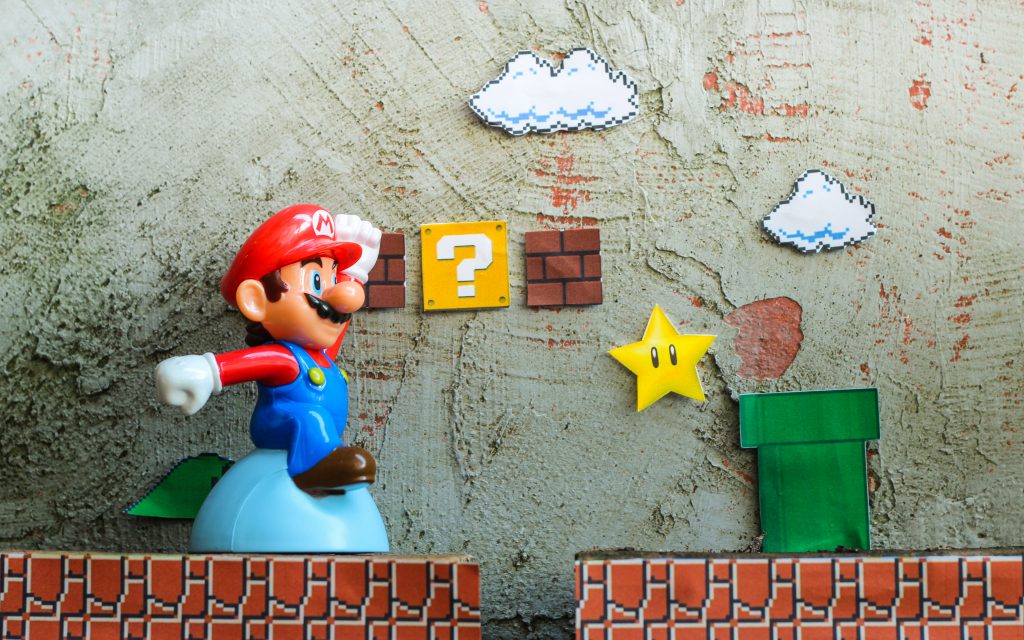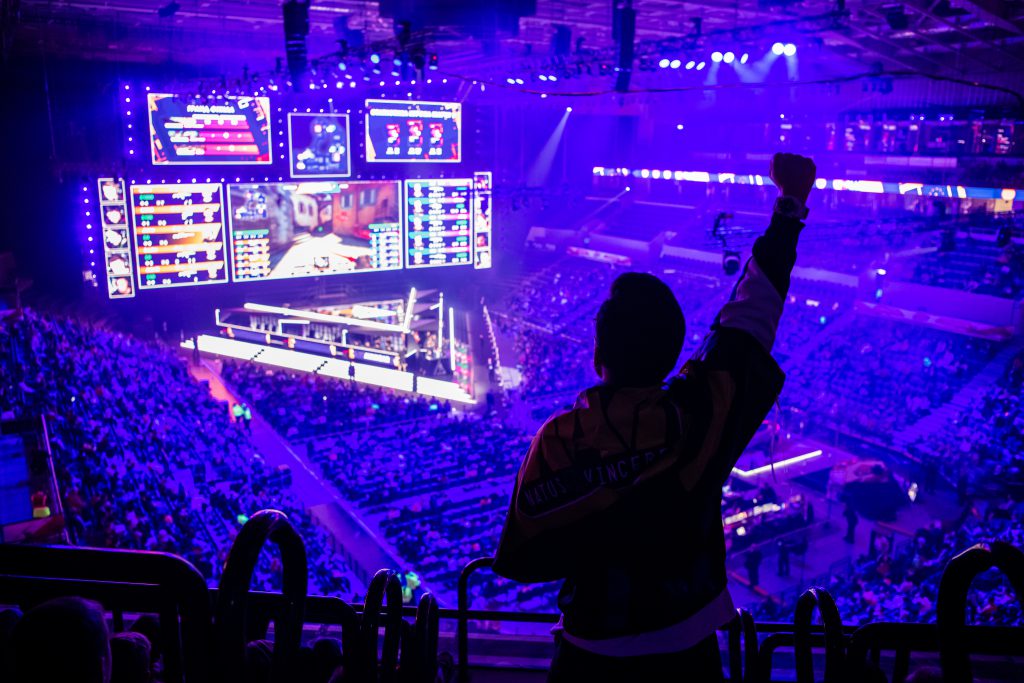Contributors
In only a few decades, the competitive gaming industry has grown from small gatherings of people playing for fun, to professional athletes competing for MILLIONS of dollars in massive arenas. The global video game industry saw revenues more than double over the last decade, eclipsing the value of the global movie industry in the process.
Competitive multiplayer games now boast a player base in the hundreds of millions, and major ESports tournaments now average almost as many live viewers as the Olympics. There are teenagers winning millions of dollars, tournaments with 170,000+ in attendance, and streams boasting more than 60 million viewers. How did we get here? ESports has become a leading part of pop culture, and it’s done so faster than anyone thought possible. Today we’ll take a journey through history, and see how ESports’ meteoric rise came to be.
The Beginning
The origins of competitive video games can be traced all the way back to the 1970s when the first arcade games were made. For the first time people could easily access video games, and measure themselves against the performance of their friends. Arcade games began to spring up across the U.S. and by the 1980s were a fixture of American culture. Games like Pac-Man and Donkey Kong appeared not only in arcades but in doctors’ offices and grocery stores.

The first video game competitions came to be in these arcades, where players would compete to see who could achieve the highest score. The next step in the progression of video games was the advent of consoles. While the first consoles were created in the early 70s, none saw widespread success until the ‘Nintendo Entertainment System’ (NES) in 1985. The NES gave players the opportunity to play games at home, allowing them far more time to improve and compete against their friends for high scores.
The First Video Game Tournament
The first major video game tournament was the Nintendo World Championships in 1990. The event hosted thousands of players, who would compete for high scores in Super Mario Bros, Tetris, and Rad Racers. The event toured 30 American cities, from March to December. The top scorers in each city were then invited out to Universal Hollywood Studios in Los Angeles, where they would compete for the title of World Champion. There were three age categories and thus three winners, each walking away with $10,000, a new TV, and a golden Mario trophy.

While this event with a small $10,000 prize pool was far from creating any professional gamers, it was monumental in establishing the foundation for ESports competition. Some of the trends seen from this contest can still be observed today. For example in a face-off between the world champions, it was the two youngest players who came out on top, paralleling today’s ESports scene that is still dominated by teenagers.
Multiplayer Online Games
While players could compete for high scores, they were not competing directly against each other yet. Street Fighter became one of the first arcade games to promote Player vs Player competition, and as a result, the game skyrocketed in popularity. The game’s success showed developers that competition would be the future of the industry.
In 1996, Doom created the first online multiplayer FPS. This is the grandfather to all of the competitive shooters we see on the market today. Quake followed soon after, and by the early 2000s, games like Call of Duty and Halo were the most popular games in the world. These games allowed for big skill differences between players, and because they could all be played on PCs or Consoles, players had lots of time to work on improving.

MLLG and International Acclaim
In 2002, MLG (Major League Gaming) was founded by Sundance DiGiovanni and Mike Sepso. MLG began hosting tournaments for all kinds of games, but their groundbreaking advancement came in 2006, where they became the first-ever televised Video Game League. Just as in traditional sports, storylines were crafted, rivalries were formed, and fans had a consistent way to watch and cheer on their favorite teams and players. MLG would continue to be a major part of progressing ESports, creating leagues and tournaments for all kinds of games.
While MLG pushed for ESports in America, there was another massive ESports expansion occurring on the other side of the world. Starcraft, a real-time strategy game released in 1998 became massively popular in South Korea. In 2003, professional players began to organize into teams and were sponsored by some of the biggest companies in South Korea. The Starcraft league was televised throughout the country, and due to the sponsorships, the professional players could make Starcraft a full-time job. This is the first example of professional players, and the companies involved in these teams would set the stage for the future of ESports Organizations.
Streaming
Tournaments also no longer had to make TV deals in order to be viewed. This created a slew of independent tournaments and allowed video game developers to create tournaments for their own games much more easily. The expansion of streaming directly resulted in the expansion of ESports across a multitude of titles, and competitive communities arose in games that would have otherwise been left behind.
Developers becoming Involved
MLG’s Leagues and tournaments, as well as the success of the Starcraft league in Korea, showed video game developers that there was a serious market to be tapped when it came to making their games competitive. Call of Duty added search and destroy, Halo created game modes specifically for competition, League of Legends created a ranked system, and so on. Today almost every single multiplayer shooter is released with competitive aspects already in place, creating more competitive players and bigger tournaments.
While MLG pioneered ESports Leagues, it would be the creation of Twitch that would allow ESports to transition from a hobby to a profession for the top-of-the-line players. Twitch was originally founded as a subsection of a streaming site titled Justin.TV, and separated into its own site in 2011. By streaming their own gameplay and tournaments, ESports competitors had found a way to create a sustainable career around gaming. This progression is massive in the grand scheme of competitive video games. Players could devote 100% of their focus to their craft. More time practicing meant an improved product for the audience, as well as more content than ever before.

Major Tournaments of the Last Decade
ESports tournaments have only been around for a couple of decades, and yet they are already rivaling the prize pools of major sports. To give context to the rapid explosion and expansion of ESports, in 2011 The League of Legends World Championship boasted a 2 million dollar prize pool (Largest in History at the time). Only 8 years later, the Fortnite World Cup set records for largest overall, and largest individual prize pools. With a combined prize pool of 30 million dollars. The Solos world champion Bugha walked away with more than 3 million dollars. To compare this to a major sporting event, the winner of the Wimbledon in 2021 will only make 2.4 million dollars.
ESports is the Future
All of these tournaments and their massive prize pools display one thing. ESports are exploding! In both participation and viewership, ESports are reaching heights many never thought possible. While the rise seems to have been rapid and unexpected, when looking at history it becomes clear why this growth has occurred.
People love games. Video games became popular as soon as they were put in the arcade. The social aspect of playing a game while your friends standing behind you and watching is replicated today through multiplayer online games. Strong social factors, legitimate career opportunities, and increasing interest among viewers will only continue to push ESports into the mainstream. Do not be surprised when ESports became the world’s primary form of entertainment.
Cameron Overton is a Forbes Contributor and consultant to NOVOS, who has been creating content related to the video game industry for more than 2 years.
Forbes Israel Contributors are independent writers that were individually picked by Forbes staff. The writers are experts in their field and they provide professional commentary and analysis of current events. The content is unsponsored.





